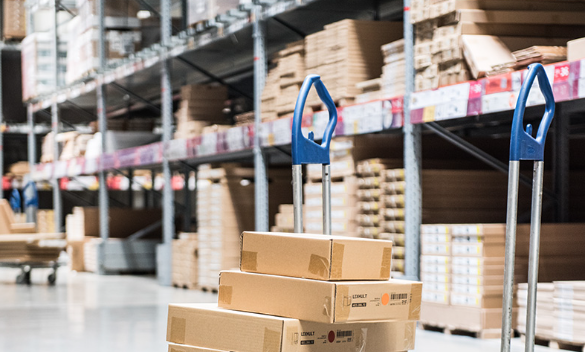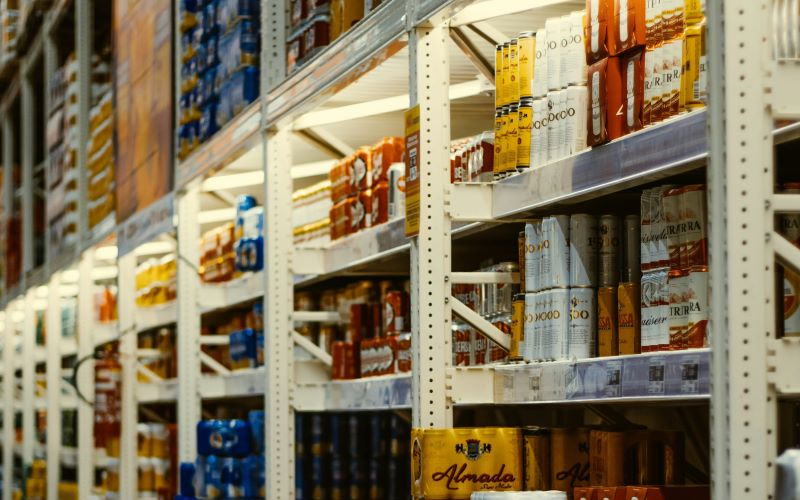Efficient inventory tracking is essential for modern supply chains. LPN Barcodes (License Plate Number Barcodes) are a widely used tool for tracking inventory movement, reducing errors, and improving warehouse efficiency.
Unlike product barcodes, which identify a specific item, an LPN Barcode acts as a unique serial identifier assigned to a pallet, carton, or shipment.
It does not store detailed product data but instead links to a database in a Warehouse Management System (WMS) or Enterprise Resource Planning (ERP) system.
When scanned, the barcode retrieves information such as origin, destination, storage location, and handling instructions.
Why LPN Barcodes Are Essential for Warehouse Operations
Manual inventory tracking is inefficient and prone to human error. LPN Barcodes streamline warehouse management by automating inventory identification and movement tracking. Key benefits include:
● Real-time inventory visibility: Scanning an LPN Barcode instantly updates the warehouse system, eliminating the need for manual data entry.
● Error reduction: Unique serial numbers minimize misplacements and ensure shipments are accurately recorded.
● Faster order fulfillment: Logistics teams can quickly retrieve, sort, and ship inventory without manual verification.
● Supply chain optimization: LPN Barcodes enhance traceability across multiple warehouses and distribution centers.
For example, a distribution center can assign LPN Barcodes to incoming shipments. When scanned upon arrival, the system logs key details, ensuring efficient tracking as products move through the supply chain.

How to Generate an LPN Barcode?
Businesses looking to implement LPN Barcode tracking need a free LPN Barcode Generator.
1. Enter LPN data: Provide the unique identifier assigned by your warehouse system.
2. Generate the barcode: Click the generate button to create a scannable LPN Barcode in formats such as PNG, SVG, or JPG.
3. Download and print: Print the barcode on a label printer for easy application.
Our LPN Barcode Generator adheres to industry standards and ensures compatibility with all major barcode scanning systems. Whether for small businesses or large enterprises, generating LPN Barcodes simplifies inventory management.
Best Practices for LPN Barcode Label Design
A properly designed LPN Barcode Label is critical for accurate scanning. Follow these best practices to ensure barcode readability:
● Appropriate Size: Ensure the barcode is large enough for barcode scanners to read from a reasonable distance.
● High Contrast: Use black barcodes on a white background to improve scanning accuracy. Avoid colored backgrounds or complex designs.
● Durable Material: Print on high-quality label stock resistant to smudging, moisture, and tearing.
● Proper Placement: Place the barcode on a flat, non-reflective surface, avoiding edges, wrinkles, or curved areas.
By following these barcode label guidelines, businesses can reduce scanning errors and improve operational efficiency.

Industry Applications of LPN Barcodes
LPN Barcodes are widely used across various industries to enhance traceability and efficiency:
● Retail: Large retailers use LPN Barcodes to track bulk shipments and restock inventory efficiently.
● Manufacturing: Manufacturers assign LPNs to batches of raw materials and finished products to improve quality control.
● Healthcare: Hospitals and pharmaceutical companies use LPN Barcodes for tracking medical supplies and ensuring correct product distribution.
● E-commerce & Logistics: Warehouses use LPN Barcode tracking to streamline order picking, packing, and shipping.
These applications improve supply chain visibility and reduce operational costs, making LPN Barcode solutions essential for modern businesses.
LPN Barcodes vs. Product Barcodes: Key Differences
Feature | LPN Barcode | Product Barcode |
Purpose | Identifies pallets, shipments, or storage locations | Identifies individual products |
Data Type | Links to external database records | Encodes product-specific data (e.g., SKU, price) |
Application | Used in logistics, warehouses, and inventory tracking | Used in retail and point-of-sale (POS) transactions |
Scanning System | Scanned in warehouse management and supply chain tracking | Scanned at POS terminals for purchase processing |
Unlike product barcodes, which remain fixed on an item, LPN Barcodes are temporary and assigned dynamically as inventory moves.
Conclusion: Why Businesses Should Adopt LPN Barcode Solutions
LPN Barcodes provide an essential layer of tracking and automation in logistics, warehousing, and inventory management.
Companies implementing LPN Barcode tracking benefit from faster operations, greater accuracy, and real-time inventory visibility.
To streamline inventory processes, businesses can use the LPN barcode generator at our website. This tool simplifies barcode creation and ensures compatibility with modern warehouse management systems.




